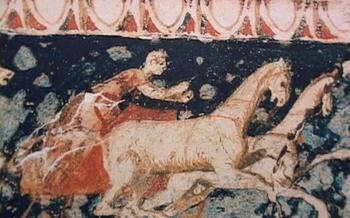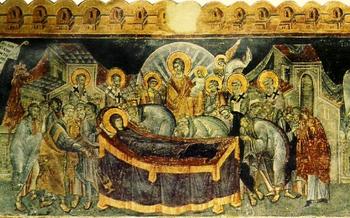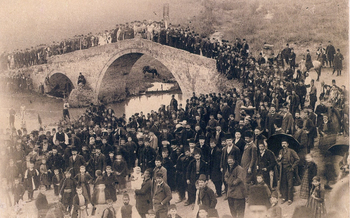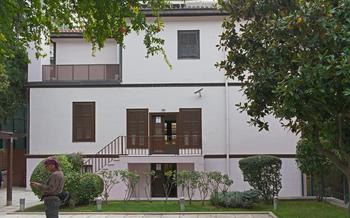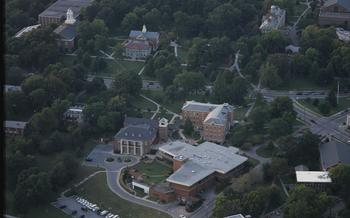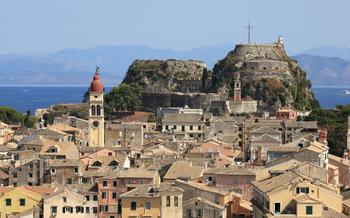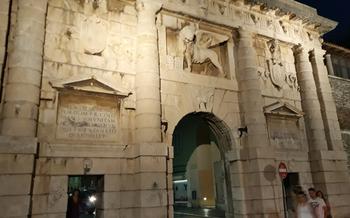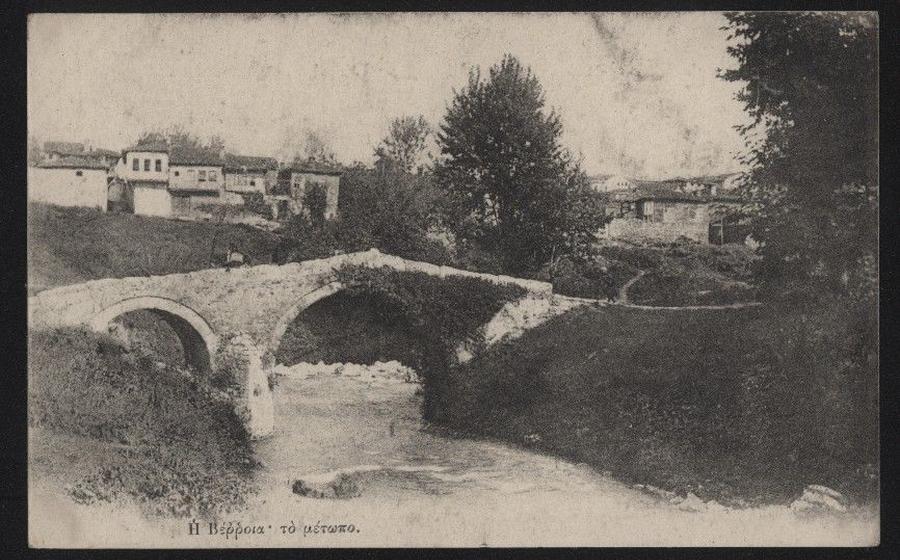
The Silk Museum of Vermio
- The Silk Museum of Vermio: A Journey Through History and Art
- Unveiling the Secrets of Silk Production
- Exploring the Museum's Exquisite Exhibits
- Interactive Experiences for a Deeper Understanding
- A Glimpse into the Life of Silkworms
- Traditional Silk Craftsmanship in Veria
- The Silk Museum's Contribution to Cultural Preservation
- Practical Information for Visitors
- Insider Tips for Making the Most of Your Visit
- Unveiling the Secrets of Ancient Silk Dyeing Techniques
- Exploring the Cultural Impact of Silk on Veria's History
- Behind the Scenes: The Museum's Conservation Efforts
- Educational Programs and Workshops for All Ages
- The Silk Museum as a Center for Cultural Exchange
- Insider Tip: Discover the Hidden Gems of Veria
The Silk Museum of Vermio: A Journey Through History and Art
Established in 1997, the Silk Museum of Vermio is a unique institution dedicated to preserving and showcasing the rich history and artistry of silk production in Greece. Located in the picturesque town of Veria, the museum houses an impressive collection of silk artifacts, providing visitors with a captivating journey through the centuries-old tradition of silk making.
Historical Significance of the Museum: Veria holds a special place in the history of silk production in Greece. During the Byzantine era, the city was renowned for its thriving silk industry, and its silks were highly sought after throughout the empire. The Silk Museum of Vermio pays homage to this rich heritage by showcasing the tools, techniques, and artistry that made Veria a center of silk production.
Unique Collection of Silk Artifacts: The museum's collection boasts a diverse array of silk artifacts, including rare fabrics, garments, embroideries, and accessories from around the world. Visitors can marvel at the intricate patterns, vibrant colors, and delicate textures of these exquisite pieces, which represent the diverse cultural influences that have shaped the art of silk making.
Interactive Exhibits for a Memorable Experience: To enhance the visitor experience, the Silk Museum of Vermio features interactive exhibits that bring the history of silk to life. Through hands-on activities, multimedia presentations, and demonstrations, visitors can gain a deeper understanding of the processes involved in silk production and the cultural significance of silk in various societies.
Workshops and Demonstrations for Hands-on Learning: The museum offers regular workshops and demonstrations that provide visitors with the opportunity to learn about and experience the art of silk making firsthand. From silk spinning and weaving to dyeing and embroidery, these interactive sessions allow visitors to immerse themselves in the creative process and gain a deeper appreciation for the skill and artistry involved in silk production.
Unveiling the Secrets of Silk Production
The Silk Museum of Vermio offers a fascinating glimpse into the ancient techniques of silk production. Visitors can learn about the lifecycle of the silkworm, from egg to cocoon, and the importance of mulberry leaves in silk production. Traditional methods of silk reeling and weaving are demonstrated, showcasing the skills and patience required to create this luxurious fabric. The museum also explores the evolution of silk production over the centuries, highlighting the cultural significance of silk in Veria and beyond.
Exploring the Museum's Exquisite Exhibits
The exhibits at the Silk Museum of Vermio are a testament to the beauty, versatility, and cultural significance of silk. Visitors can marvel at rare silk fabrics and garments from around the world, each adorned with intricate embroidery and decorative motifs. Historical costumes and accessories provide a glimpse into the fashion and traditions of different eras, while contemporary silk artworks and installations showcase the innovative and artistic expressions of modern-day silk artists.
Among the highlights of the collection are exquisite silk fabrics from China, India, Japan, and Europe, showcasing a diverse range of weaving techniques, patterns, and colors. Visitors can admire the delicate silk embroidery from Kashmir, featuring vibrant floral motifs and intricate geometric designs. The museum also houses a collection of historical costumes, including traditional Greek wedding dresses, elaborate ceremonial robes, and elegant evening gowns, each adorned with intricate silk detailing.
The museum's collection extends beyond traditional textiles, showcasing contemporary silk artworks and installations that push the boundaries of silk as a medium. These works explore various themes and concepts, from the interplay of light and shadow to the exploration of cultural identity and the human form. Visitors can engage with these thought-provoking and visually stunning pieces, gaining a deeper appreciation for the versatility and expressive potential of silk.
Interactive Experiences for a Deeper Understanding
The Silk Museum of Vermio offers a range of interactive experiences to enhance visitors' understanding of the history, production, and significance of silk. Visitors of all ages can engage in hands-on activities that bring the world of silk to life.
Interactive exhibits allow visitors to explore the various stages of silk production, from the cultivation of silkworms to the weaving and dyeing of silk fabrics. Visitors can witness live demonstrations of silk spinning, weaving, and dyeing, gaining insights into the traditional techniques used by skilled artisans.
Educational workshops provide opportunities for visitors to learn new skills and create their own silk masterpieces. Visitors can participate in silk painting and embroidery workshops, guided by experienced instructors who share their knowledge and expertise. These workshops are a great way to immerse oneself in the art of silk making and create a unique souvenir to take home.
Multimedia presentations offer a comprehensive overview of the history of silk, from its origins in ancient China to its global impact throughout the centuries. These presentations showcase the cultural significance of silk in different societies and highlight the role it has played in shaping fashion, art, and trade.
Through these interactive experiences, the Silk Museum of Vermio provides a memorable and engaging learning experience for visitors of all ages. Visitors leave the museum with a deeper appreciation for the artistry, craftsmanship, and cultural significance of silk, and a newfound understanding of the processes involved in its production.
A Glimpse into the Life of Silkworms
The Silk Museum of Vermio offers a unique opportunity to learn about the fascinating life cycle of silkworms, the remarkable creatures that produce the precious silk fibers. Visitors can observe the different stages of the silkworm's development, from the tiny egg to the delicate cocoon. Interactive exhibits explain the importance of mulberry leaves in the silkworm's diet and the intricate process of cocoon formation.
The museum also highlights the challenges faced by silkworm farmers, who must carefully monitor temperature, humidity, and other environmental factors to ensure the survival of their delicate charges. Visitors can learn about the threats posed by diseases and pests, as well as the importance of conservation efforts to protect silkworm populations.
A special highlight of the museum is the opportunity to witness live silkworm feeding demonstrations. Visitors can watch as the tiny creatures eagerly devour mulberry leaves, understanding the vital role they play in the production of silk.
Traditional Silk Craftsmanship in Veria
Silk production in Veria dates back centuries, leaving a lasting legacy of craftsmanship and expertise. Local artisans continue to uphold traditional techniques, preserving the city's rich silk-making heritage. A vibrant silk market bustles with activity, offering visitors an array of exquisite products, from shimmering fabrics to intricate handmade garments. This lively marketplace provides an opportunity to witness the artisans' skill firsthand and purchase authentic souvenirs, ensuring that the art of traditional silk craftsmanship thrives for generations to come.
The Silk Museum's Contribution to Cultural Preservation
The Silk Museum of Vermio plays a vital role in preserving and promoting the cultural heritage of Veria. By showcasing the rich history of silk production in the region, the museum helps to raise awareness of this important tradition and its significance to the local community. Through its exhibits, workshops, and educational programs, the museum actively works to revive and sustain traditional silk craftsmanship skills, ensuring that they are passed down to future generations.
The museum collaborates closely with local artisans to support their work and promote their products. It provides a platform for artisans to showcase their skills and sell their creations, helping to generate income and sustain their livelihoods. By working together, the museum and local artisans contribute to the preservation and revitalization of the silk industry in Veria, ensuring that this unique cultural heritage remains a vibrant part of the city's identity.
Practical Information for Visitors
The Silk Museum of Vermio is conveniently located in the city center of Veria, making it easily accessible to visitors. The museum's address is 2 Leoforos Dimokratias, and its contact information can be found on its official website. The museum is open to the public from Tuesday to Sunday, with slightly different hours during the summer and winter seasons. Admission fees are reasonable, and there are discounts for students, seniors, and families. Guided tours are available in English and Greek, and visitors can book in advance to ensure a personalized experience. The museum is wheelchair accessible, and there are facilities for visitors with disabilities.
Insider Tips for Making the Most of Your Visit
To fully immerse yourself in the world of silk and its cultural significance in Veria, consider planning your visit during the annual Silk Festival. This vibrant event showcases the city's rich silk-making heritage through exhibitions, demonstrations, workshops, and traditional performances. It's an excellent opportunity to witness the creative process firsthand and interact with local artisans and experts.
Combine your museum visit with a tour of Veria's other attractions to gain a comprehensive understanding of the city's history and culture. Explore the charming Old Town with its well-preserved Ottoman and Byzantine architecture, visit the Archaeological Museum to delve into Veria's ancient past, and indulge in the local cuisine known for its fresh ingredients and traditional dishes.
Take advantage of the museum's educational resources to enhance your learning experience. Guided tours are available in multiple languages, providing in-depth insights into the exhibits and the history of silk production. Participate in hands-on workshops on silk painting, embroidery, or dyeing to gain practical skills and a deeper appreciation for the art of silk craftsmanship.
Consider purchasing a souvenir from the museum shop to support local artisans and contribute to the preservation of traditional silk-making techniques. The shop offers a wide range of silk products, including scarves, shawls, clothing, and home décor items, all crafted with the same care and expertise that you'll witness in the museum's exhibits.
Unveiling the Secrets of Ancient Silk Dyeing Techniques
In addition to showcasing the art and history of silk, the Silk Museum of Vermio also offers a fascinating glimpse into the ancient techniques of silk dyeing. Visitors can learn about the traditional methods used to extract natural dyes from plants and minerals, such as madder root for red, indigo for blue, and saffron for yellow. These natural dyes have been used for centuries to create vibrant and intricate patterns on silk fabrics.
The museum's collection includes examples of silk fabrics dyed using these traditional techniques, allowing visitors to appreciate the skill and artistry involved in this process. Demonstrations of dyeing techniques using local materials are also offered, providing a hands-on opportunity for visitors to try their hand at this ancient craft. Through these interactive experiences, the museum offers a unique opportunity to explore the cultural significance of specific colors and patterns in silk fabrics and gain a deeper understanding of the artistry and craftsmanship that goes into the creation of these beautiful textiles.
Exploring the Cultural Impact of Silk on Veria's History
Silk has played a pivotal role in shaping the cultural identity of Veria. The city's involvement in the silk trade since Byzantine times has left an enduring legacy. Silk production became an integral part of the local economy, providing livelihoods for generations of Verians. Notable families, such as the famous silk merchants, the Kokkinakis family, amassed wealth and influence through their involvement in the silk trade. The success of the silk industry led to the construction of lavish mansions and opulent churches, showcasing the affluence of the city.
Moreover, silk profoundly influenced local customs and traditions. The annual Silk Festival, held every June, is a vibrant celebration that showcases the city's silk heritage. During the festival, visitors can witness traditional silk-making demonstrations, admire exquisite silk garments, and savor delicious local cuisine. Silk-related motifs and patterns can be found in local embroidery, weaving, and even in the architecture of traditional Verian houses. These cultural expressions reflect the deep-rooted connection between Veria and its silk-making heritage.
Behind the Scenes: The Museum's Conservation Efforts
Preserving the delicate silk artifacts at the Silk Museum of Vermio is a crucial aspect of its mission. The museum employs a team of skilled conservators who work tirelessly to maintain the integrity and beauty of the collection. They use specialized techniques to clean, repair, and stabilize the silk fabrics, ensuring their longevity for future generations.
One of the biggest challenges faced by the conservators is the fragility of silk. Silk fibers are extremely delicate and can easily be damaged by factors such as light, humidity, and pests. To mitigate these risks, the museum maintains a strict climate-controlled environment within the storage and display areas. Regular monitoring of temperature and humidity levels is essential to prevent the deterioration of the artifacts.
The conservators also work closely with experts and institutions worldwide to stay up-to-date on the latest conservation techniques. They attend conferences, workshops, and training programs to gain knowledge and skills that can be applied to the care of the museum's collection.
Visitors to the museum can play a vital role in supporting its conservation efforts by following guidelines and recommendations. This includes handling the artifacts with care, avoiding touching or leaning on them, and refraining from using flash photography. By respecting these guidelines, visitors can help ensure that the museum's treasures remain preserved for generations to come.
Educational Programs and Workshops for All Ages
The Silk Museum of Vermio offers a wide range of educational programs and workshops designed to engage visitors of all ages and backgrounds. Children can participate in interactive workshops where they learn about the life cycle of silkworms, the process of silk production, and the cultural significance of silk. Through hands-on activities, storytelling, and games, kids develop an appreciation for this ancient craft while fostering their creativity and curiosity.
For adults, the museum hosts specialized workshops on silk dyeing, weaving, and embroidery. These workshops provide an opportunity for participants to learn traditional techniques from experienced artisans and create their own unique silk creations. Whether you're a beginner or an experienced artist, these workshops offer a fun and immersive way to explore the art of silkmaking.
The museum also collaborates with schools and universities to offer educational programs that integrate silk-related topics into their curriculum. These programs aim to provide students with a deeper understanding of the cultural, historical, and scientific aspects of silk. Through lectures, demonstrations, and hands-on activities, students gain valuable insights into the world of silk and its significance throughout history.
By offering a variety of educational programs and workshops, the Silk Museum of Vermio strives to engage the community, promote cultural exchange, and inspire future generations to appreciate and preserve the art of silkmaking.
The Silk Museum as a Center for Cultural Exchange
The Silk Museum of Vermio transcends its role as a local institution by actively engaging in cultural exchange on a global scale. It hosts international exhibitions and events that showcase silk traditions and artistry from around the world, fostering cross-cultural understanding and appreciation. Through collaborations with museums and institutions worldwide, the museum participates in joint projects that promote the study and preservation of silk heritage. Exchange programs for students and researchers provide opportunities for individuals to immerse themselves in the world of silk and contribute to its ongoing legacy. As a center for cultural exchange, the Silk Museum of Vermio plays a vital role in connecting people, cultures, and traditions through the shared language of silk.
Insider Tip: Discover the Hidden Gems of Veria
Beyond the Silk Museum, Veria offers a wealth of hidden gems waiting to be discovered. Explore the enchanting Old Town, where time seems to stand still as you wander along its narrow cobblestone streets. Admire the traditional Macedonian architecture, with its whitewashed houses and colorful balconies adorned with flowers.
Uncover the city's ancient past at the Archaeological Museum of Veria, where you'll find a fascinating collection of artifacts from the region's rich history. Learn about the ancient civilizations that once called this land home, from the Macedonians to the Romans and Byzantines.
Indulge in the delectable local cuisine, known for its fresh ingredients and traditional dishes. Sample mouthwatering specialties like "tourloumpoukia," a hearty vegetable stew, or "gyros," a classic Greek dish of grilled meat wrapped in pita bread. Don't miss the chance to taste the region's renowned wines, produced from grapes grown in the fertile Vermio foothills.
For a refreshing escape, take a day trip to Mount Vermio, located just a short drive from the city. Immerse yourself in the breathtaking natural beauty of this majestic mountain, with its lush forests, cascading waterfalls, and panoramic views. Discover hidden trails for hiking or mountain biking, and enjoy a picnic lunch surrounded by nature's splendor.
